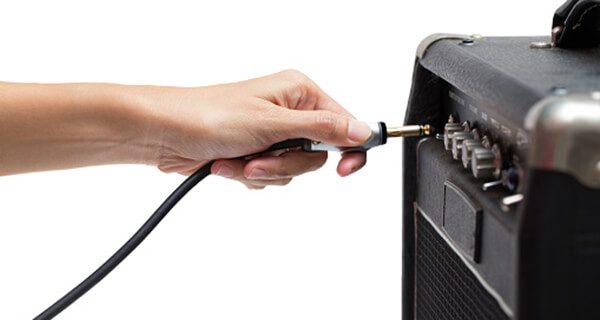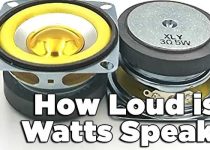Amp Crackles When Turned on [Reason & Fix]
If you’re a passionate musician or audiophile, you know the excitement of turning on your beloved amplifier to enjoy your favorite tunes or create some mesmerizing sounds. However, nothing can kill that excitement faster than the dreaded crackling sound emanating from your amp.
But fear not, this guide will explore into the reasons behind this issue and provide you with effective solutions to restore your amplifier to its pristine glory. So, let’s embark on this journey to understand why your amp crackles when turned on and how to fix it.

# Table of Contents =>
- 1 1) Understanding the Problem –
- 2 2) Diagnosing the Problem –
- 3 3) Fixing the Issue: Amp Crackles When Turned on –
- 4 4) Preventing Future Crackling –
1) Understanding the Problem –
What Causes Amp Crackling?
Before we jump into the solutions, it’s crucial to grasp the underlying causes of amp crackling. Several factors can lead to this issue, and understanding them is the first step toward a successful fix.
a) Dust and Debris:
Over time, dust and debris can accumulate inside your amplifier, causing crackling sounds when you power it up. Dust particles may interfere with the amplifier’s components, resulting in an unpleasant audio experience.
b) Loose or Corroded Connections:
Loose or corroded electrical connections within your amplifier can create intermittent contact, leading to crackling noises. These connections can be present in various parts of the amplifier, including input/output jacks, pots, and switches.
c) Tube and Component Problems:
Amplifiers equipped with vacuum tubes may experience crackling due to tube issues, such as worn-out or damaged tubes. Additionally, other components, such as capacitors and resistors, can degrade over time, causing similar problems.
d) Environmental Factors:
Environmental conditions can also play a significant role in amplifier crackling. Humidity, temperature fluctuations, and exposure to moisture can all affect the internal components of your amp.
e) Signal Interference:
External sources of electromagnetic interference, such as cell phones, Wi-Fi routers, and other electronic devices, can introduce unwanted crackling into your amplifier’s signal.
2) Diagnosing the Problem –
How to Identify the Source of the Crackling?
Before attempting any fixes, it’s essential to identify the source of the crackling in your amplifier. Here’s a step-by-step guide on how to diagnose the problem:
a) Isolate the Issue –
Start by ruling out external factors. Disconnect all input sources and ensure the problem persists. If it does, the issue likely lies within the amplifier itself.
b) Check the Cables –

Inspect your cables and connectors for visible damage. Replace any damaged cables or connectors, as they could be the source of the problem.
c) Listen Carefully –
Listen closely to the crackling sound. Try to determine if it’s coming from a specific part of the amplifier, such as the speakers, controls, or tubes.
d) Swap Tubes –
If you have a tube amplifier, consider swapping out the tubes to see if the crackling stops. If it does, the issue may be tube-related.
e) Test in a Different Environment –
Move your amplifier to a different location and test it. If the crackling disappears, environmental factors might be the cause.
3) Fixing the Issue: Amp Crackles When Turned on –
a) Cleaning Your Amplifier:

Amp crackling caused by dust and debris is a common problem. Cleaning your amplifier can often resolve this issue.
b) How to Clean Your Amplifier:
- Unplug your amplifier and allow it to cool down.
- Use compressed air to blow away dust and debris from the internal components.
- Carefully clean the exterior of your amplifier using a soft, lint-free cloth.
- Reassemble your amplifier and power it on to check if the crackling has ceased.
c) Checking and Cleaning Connections:
Loose or corroded connections can cause crackling sounds. Let’s explore how to address this issue.
d) Tightening Loose Connections:
- Power off your amplifier and unplug it.
- Inspect all electrical connections, including input and output jacks, pots, and switches.
- Tighten any loose connections using the appropriate tools.
- Reconnect the amplifier and test for crackling.
e) Dealing with Corroded Connections:
- If you find corroded connections, use a contact cleaner or a mixture of vinegar and water to remove the corrosion.
- After cleaning, ensure the connections are completely dry before reconnecting the amplifier.
- Power it on and test for any remaining crackling.
f) Replacing Faulty Tubes and Components:
If your amplifier’s crackling is tube or component-related, you might need to replace them.
i) Replacing Tubes:
- Identify the problematic tube by swapping them out one at a time.
- Purchase replacement tubes of the same type and install them carefully.
- Power on the amplifier and check if the crackling persists.
ii) Replacing Components:
- If you suspect capacitors or resistors, take your amplifier to a professional technician, as component replacement can be complex.
- The technician will identify the faulty components and replace them with suitable replacements.
- Test your amplifier after the component replacement to ensure the issue is resolved.
g) Environmental Considerations –
If environmental factors are causing the crackling, here’s how to address them:
i) Managing Humidity and Temperature:
- Ensure your amplifier is in a controlled environment with stable humidity and temperature levels.
- Use a dehumidifier or humidifier as needed to maintain the right conditions.
- Place your amp away from direct sunlight and heat sources.
ii) Shielding Against Electromagnetic Interference:
- Move your amplifier away from potential sources of interference, such as routers and cell phones.
- Use shielded cables to minimize the impact of external electromagnetic interference.
4) Preventing Future Crackling –
a) Regular Maintenance –
Preventative maintenance is key to keeping your amplifier crackle-free. Follow these maintenance tips:
- Regularly clean your amplifier to prevent dust buildup.
- Check connections periodically and tighten them as needed.
- If you have a tube amplifier, keep spare tubes on hand and replace them when necessary.
- Schedule professional maintenance for complex component replacements and thorough inspections.
b) Protecting Against Environmental Factors –
- Maintain stable environmental conditions in the room where your amplifier is located.
- Use protective covers when your amplifier is not in use to prevent dust accumulation.
Conclusion:
A crackling amplifier can be a source of immense frustration for any music enthusiast. However, by understanding the various causes and following the steps outlined in this comprehensive guide, you can troubleshoot and fix the issue effectively. Whether it’s a simple cleaning, tightening loose connections, or replacing components, you now have the knowledge to ensure your amplifier delivers crystal-clear sound for years to come.
Remember that regular maintenance and protecting your amplifier from environmental factors are key to preventing future crackling issues. With these insights and solutions, you can enjoy uninterrupted, high-quality audio experiences from your amplifier.
FAQs –
Question 1: What causes crackling in an amplifier?
Answer: Crackling in an amplifier can be caused by dirty or worn-out components, loose connections, or interference from nearby electronic devices.
Question 2: Why does my tube amp crackle when I turn it on?
Answer: Tube amps may crackle when turned on due to the sudden flow of electricity through the tubes, warming them up, or variations in power supply. It’s often normal during warm-up.
Question 3: Why does my amp crackle when I turn knobs?
Answer: Knob crackling is typically caused by dust or debris in the Potentiometer (volume/tone) or a dirty input jack. Cleaning or replacing these components can resolve the issue.
Question 4: Why do my speakers pop when I turn on the amp?
Answer: Speaker popping when turning on the amp can result from a sudden surge of power. This is normal, but excessive popping may indicate an issue with the amp or the power supply.
Last Updated on November 6, 2023 by Perry Garner


